

The Cameroon Highlands are a famous tea-growing area towards the center of the Malaysian penninsula. It's very mountainous and full of wild jungle, in the parts that aren't cleared for the cultivation of tea, roses, coffee, fruit, honey bees, and vegetables. We spent most of the time in the village of Tana Rata.
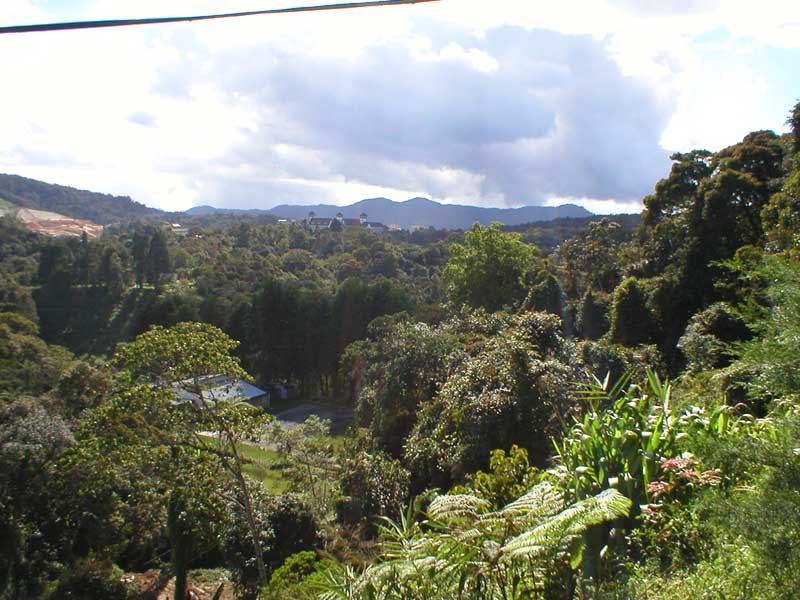
This is an overlook of the Cameroon Highlands from an area close to our hotel. You can see the tops of the buildings of Tana Rata in the distance. The Highlands were a refreshing change from KL--relatively quiet, and quite a bit cooler than the somewhat muggy lowlands.
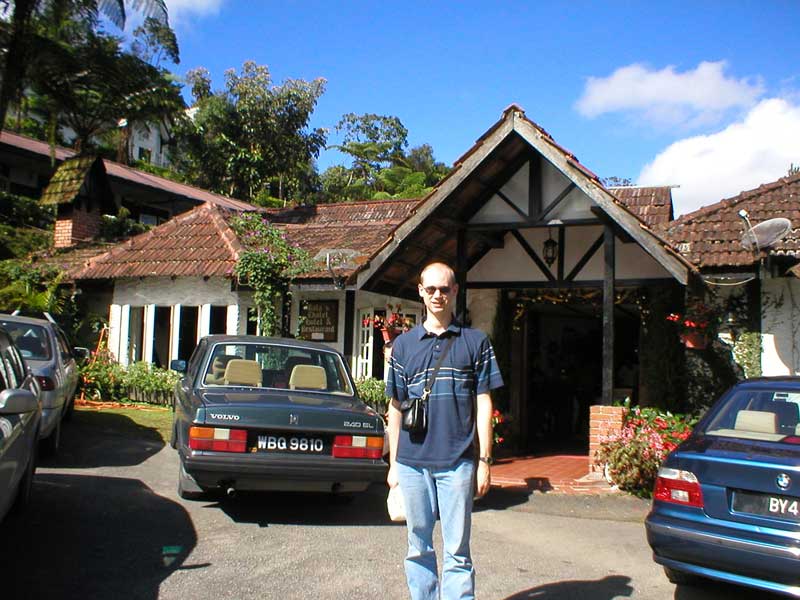
Here is Peter standing in front of the entrance to our cute little hotel, named "Bala's Chalet." Bala is a large Indian gentleman who speaks excellent English, once operated a restaurant in Australia (but closed it because, as he says, Australians like to go to crowded places, and his place wasn't crowded enough), speaks German (?), and now operates this English-style chalet.
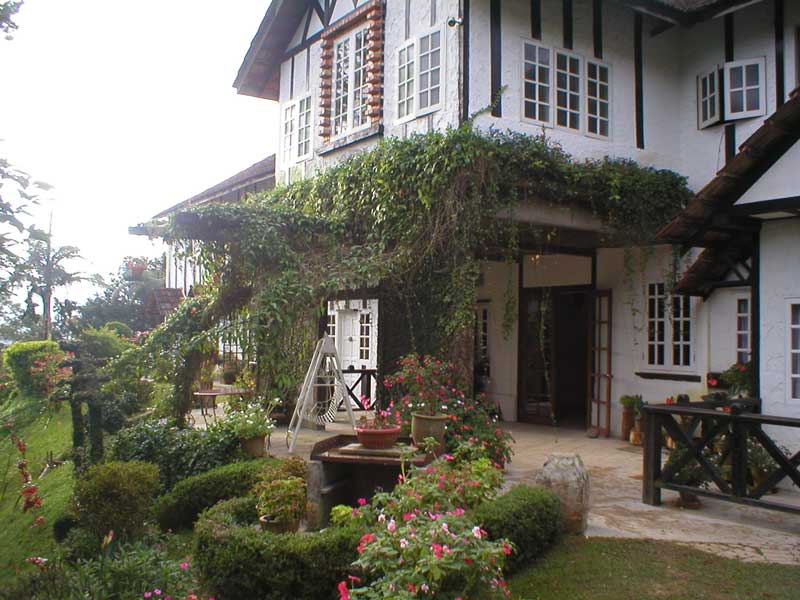
This is a picture of the back of the hotel and some of the really beautiful English garden that was all around the place. The hotel is famous for its tea and scones, which you can eat while sitting in the garden. I tried to order tea and scones at breakfast, but they hadn't made them for the day yet.
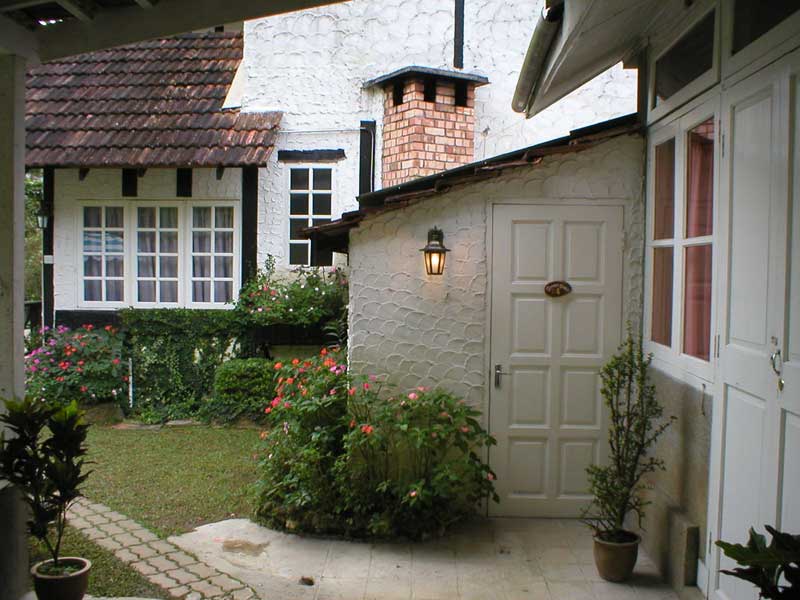
This is the door to our room, "Tiffany's Corner." You can see the chimney for the fireplace that we had inside.
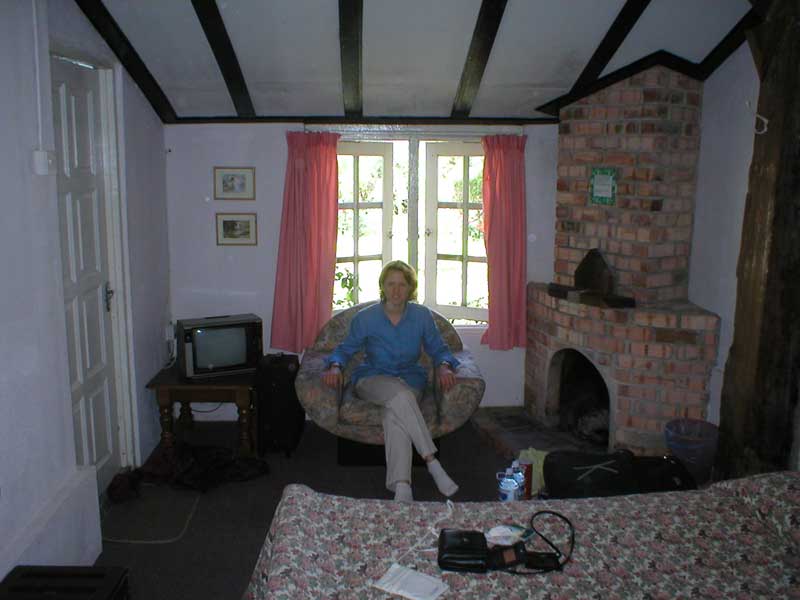
Kim is posing, looking rather stylish, in our small room at Bala's Chalet. It was a little rustic. The door used a skeleton key, the electricity was obviously a later addition to the place, and although the bathroom looked like it was recently renovated, you had to ask the staff to turn on the hot water in the morning.
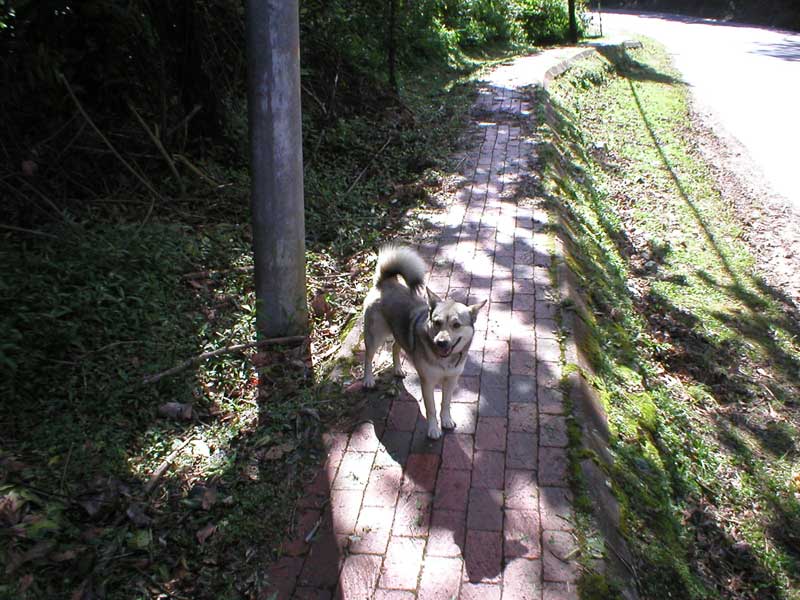
This was our guide dog. When we started walking into Tana Rata (about a mile away), he came down from a neighboring area and started leading us into town. Sometimes he would stop and wait for us to catch up, and he led us almost all the way into the village before moving back off the path. We felt like we needed to pay him or something.
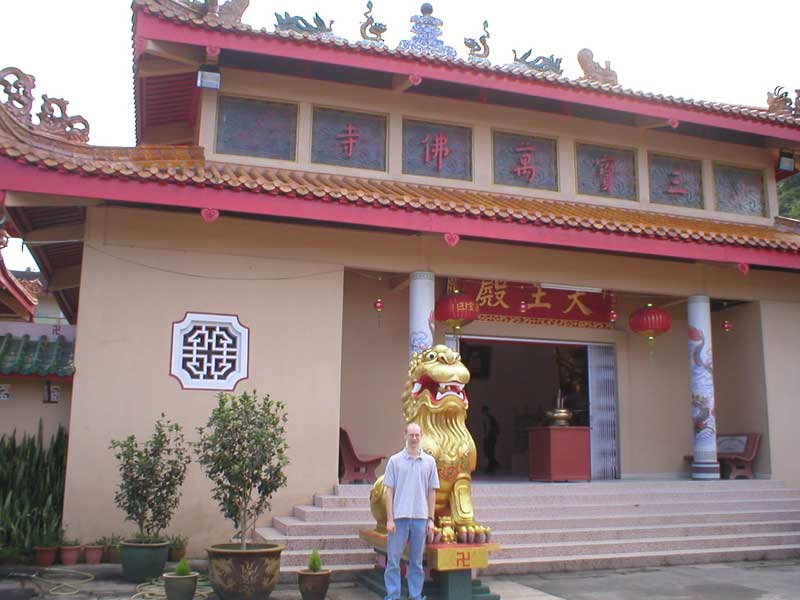
The next morning, we went on a guided tour of the sites of the Cameroon Highlands. Admittedly it is a bit touristy to take such a tour, but it was really the cheapest and easiest way to see everything. The first stop was the Sam Poh Buddhist temple. Peter is posing in front of one of the dragons guarding the temple. Don't worry, Buddhists aren't Nazis. The swastika is the symbol of Buddhist temples, and its use predates National Socialism by several hundred years. Incidentally, this is a Chinese Buddhist temple. If you look at our pictures from Haguro and Kinbo you can see Japanese Buddhist temples.
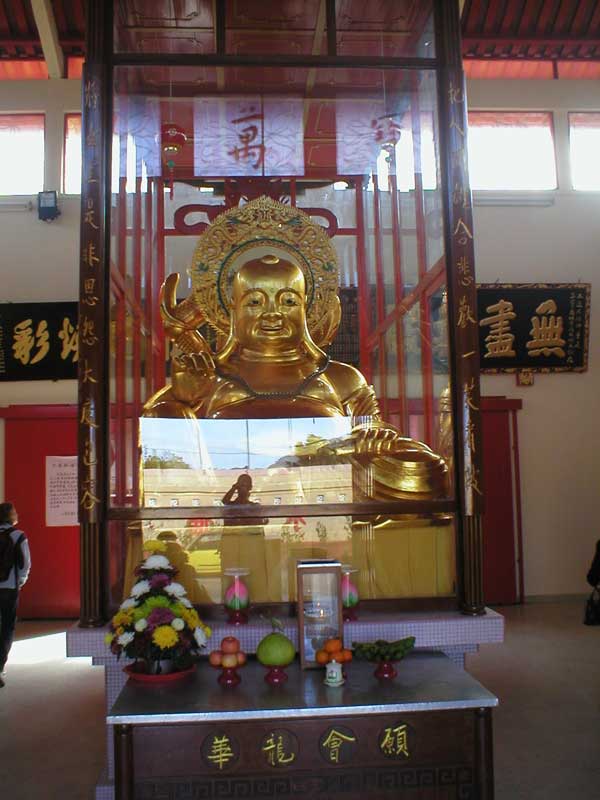
This is one statue of Buddha--the fat version. Buddha is a little like Elvis... there's a skinny young one and a fat old one.
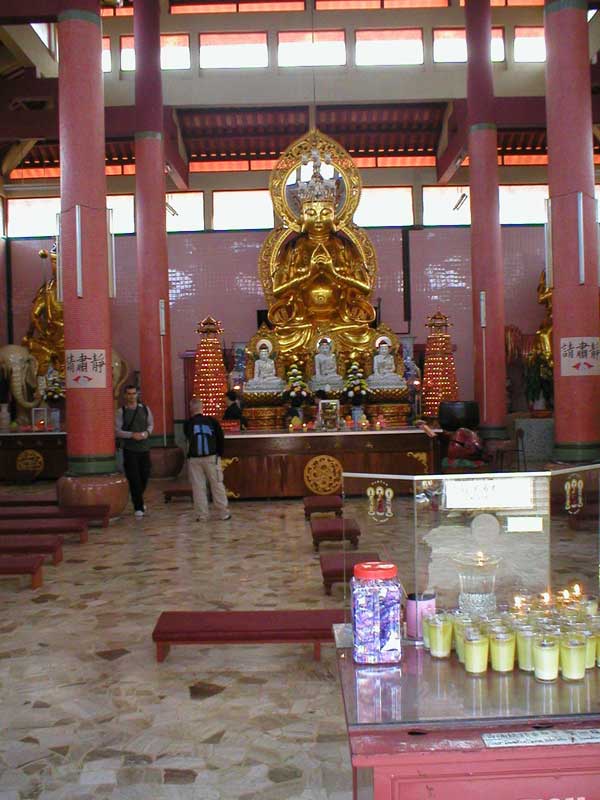
This Buddha looks more like the young Buddha. You can offer incense in this particular part of the temple, but we didn't. There were also a lot of free VCDs available for some reason. VCDs are very popular in the less-developed parts of Asia.
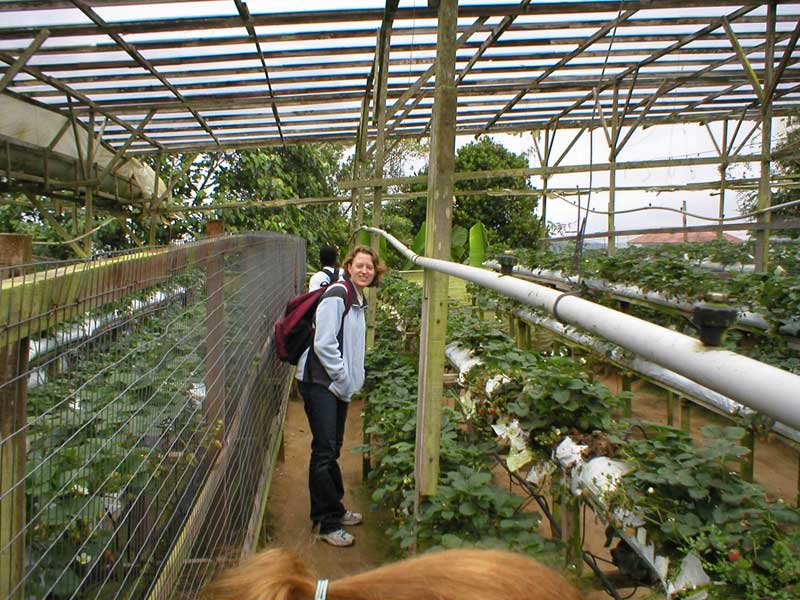
After the temple, we moved on to the strawberry farm. These strawberries are grown hydroponically so they are available year-round, and they are reserved for Malaysia. There was a little stand near the farm where we could buy fresh strawberry items. Kim got a strawberry milkshake and Peter got strawberries and cream. Both were very delicious (and cheap!). The tuft of red hair you see in the foreground is from an Australian girl. A family of an Australian couple and their two daughters (ages maybe 6 and 8) were with us on the tour. They were taking a month to travel from Singapore up to Shanghai.
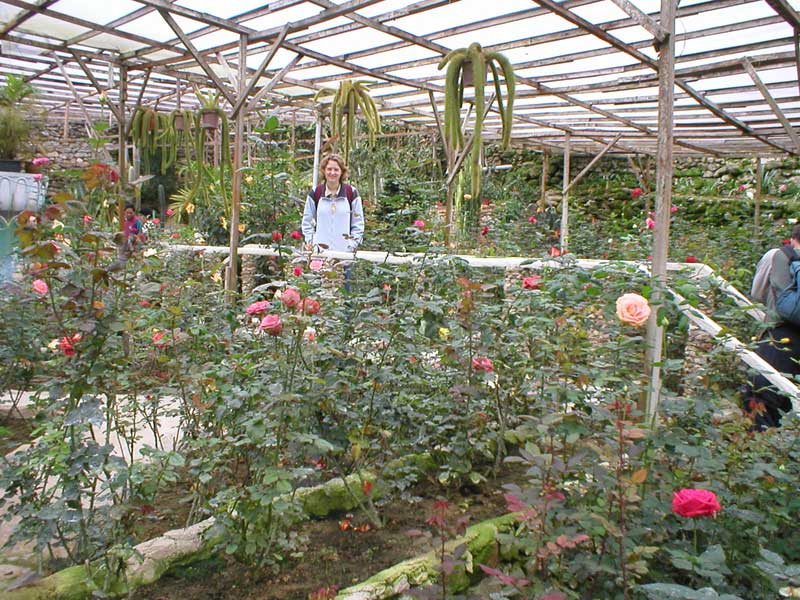
Next stop was the rose gardens. Malaysia exports tons of flowers, especially to flower-obsessed Japan (flower-arranging is an official art in Japan). There were many different types of roses... but that wasn't all. They also had impatiens, lillies, and just about anything else you would care to see.
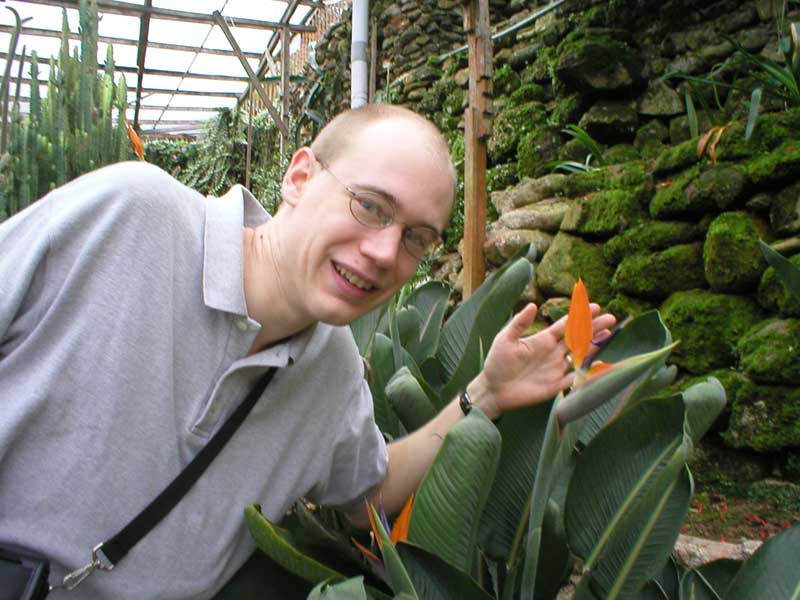
Here's Peter with one of the most interesting tropical flowers--a bird of paradise.
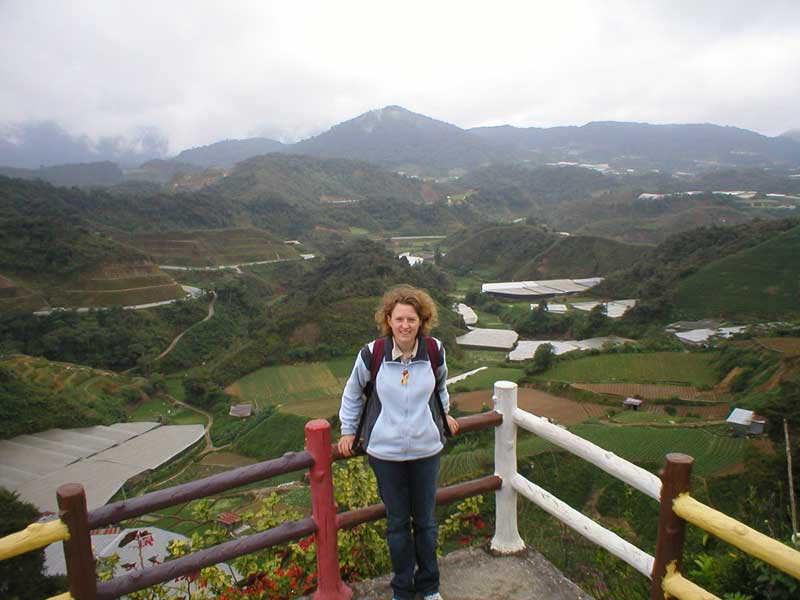
Kim is standing at an overlook at the top of the rose gardens. In the background you can see the greenhouses from all of the other flower gardens in the area.
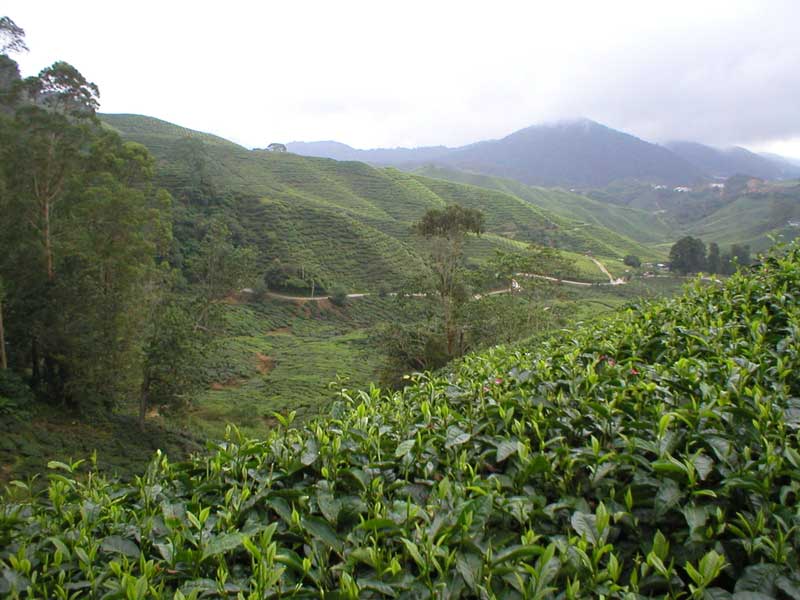
Our next place to visit was the one we were most excited about--the tea plantations. Almost everything you can see in this picture is tea--it's one of the largest tea plantations in Southeast Asia and goes by the name BOH. This is a play on words. It stands for Best of Highlands, but "boh" also means something in Chinese that we forgot. The plantation is at a pretty high elevation--somewhere around 5,000 feet. Our guide told us that this makes the tea much less bitter. We agree... the tea we bought there is really smooth and delicious.
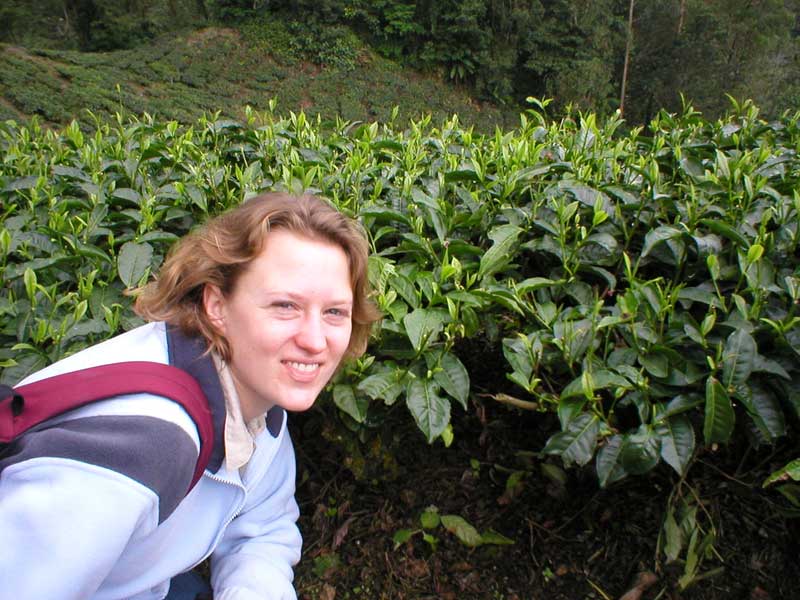
Here is Kim posing with some of the tea shrubs. Tea actually grows on trees; however, they keep them cut down to shrub size in order to make the harvesting much easier for the Indonesians who migrate for a 3-5 year work stint at the plantations.
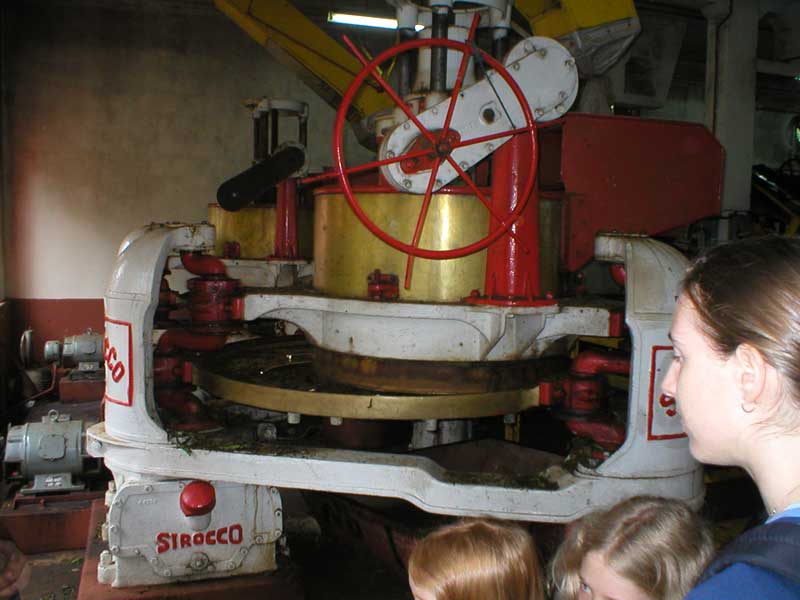
We took a brief tour to view the facility that processes the tea. First, the tea is allowed to air dry for 18 hours, reducing the moisture content by 50%. The second step is to grind the tea leaves in this machine here. After grinding, the smaller leaves are separated for fermentation while the larger leaves are put through the grinder again. In the foreground you can see the tops of the Australian girls' heads again.
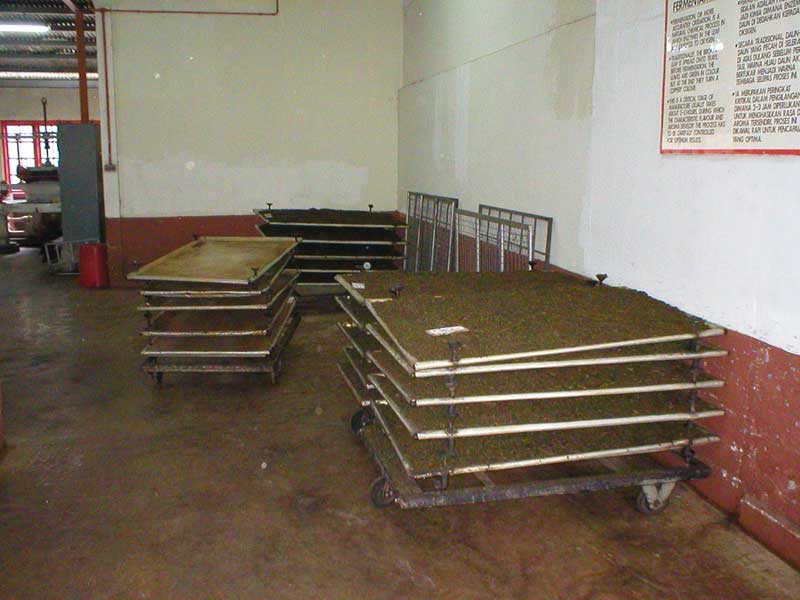
This is step three in the process. Here the tea leaves will ferment for about six hours. Green tea will skip the fermentation phase, but this particular processing facility only makes black tea.
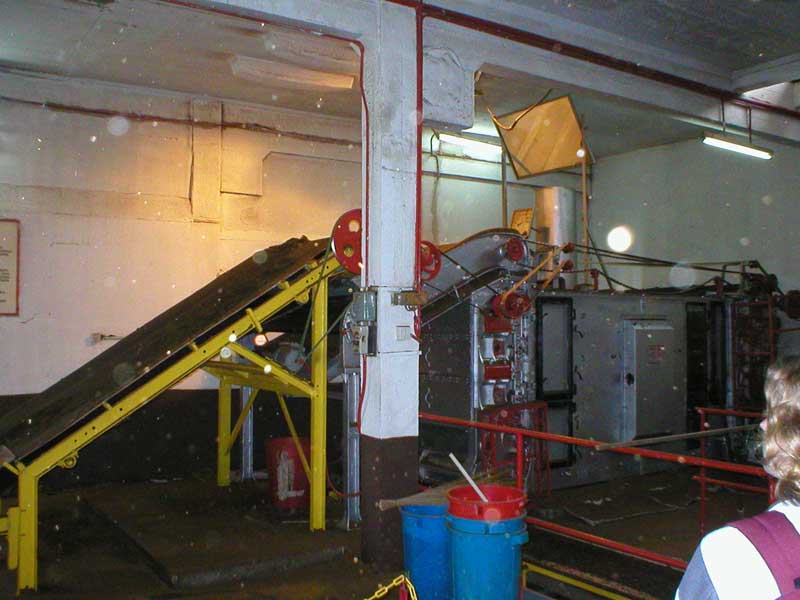
Next, the rest of the moisture is removed by putting the leaves through this dryer that blows 200 degree air across the leaves. The final result is that only 3% of the moisture remains.
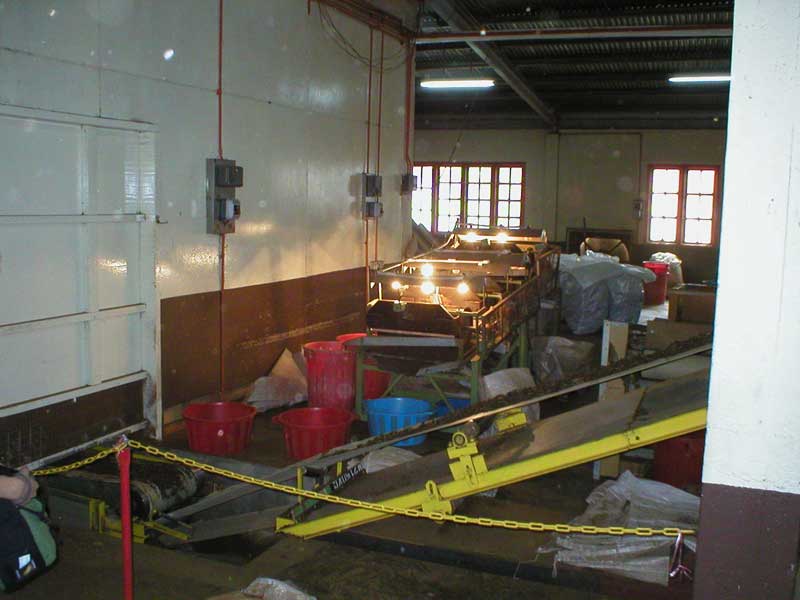
Finally, the tea is separated from the leaves and packaged for shipping. The stems make up 80% of what is processed, and they are sent back to the fields as fertilizer. The other 20% is put in bags and shipped to Kuala Lumpur for packaging and flavoring. After we visited the processing plant, we took a break at the cafe and enjoyed some of the tea. We also purchased some of this really excellent tea at the neighboring shop.
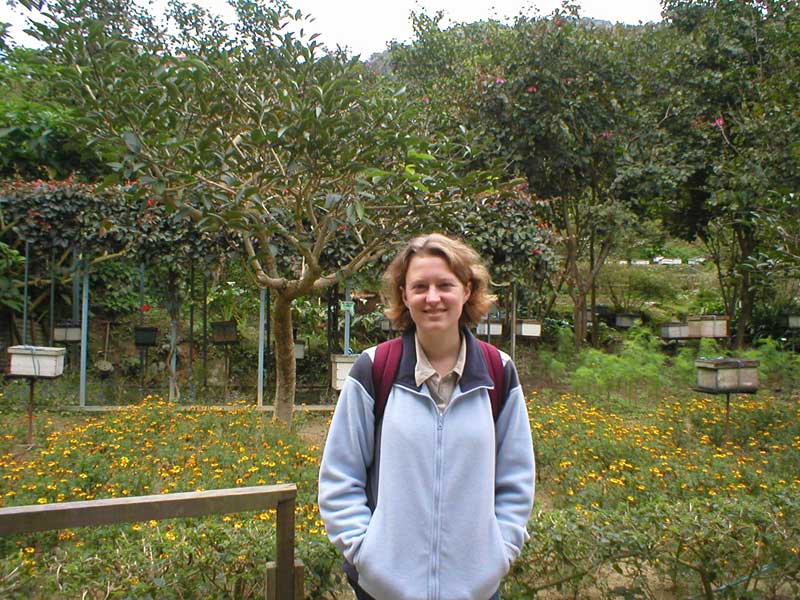
Our second-to-last stop was the bee farm. We tasted some hot honey-and-water and heard about all of the interesting things that honey can do. We did not, however, buy any.
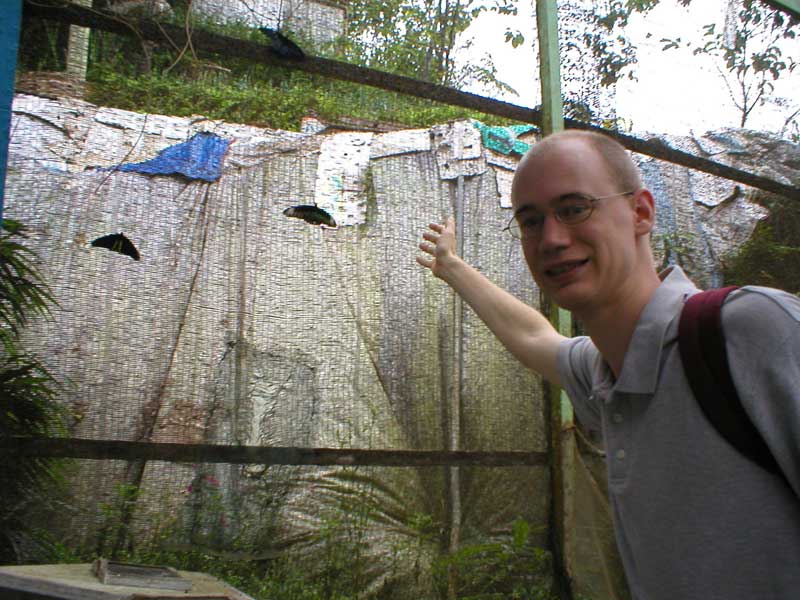
The last stop was the butterfly farm. There were tons of butterflies all over the place, and it was well worth the 50 cents in admission that we paid. Here, Peter is pointing out a collection of butterflies at rest on the netting.
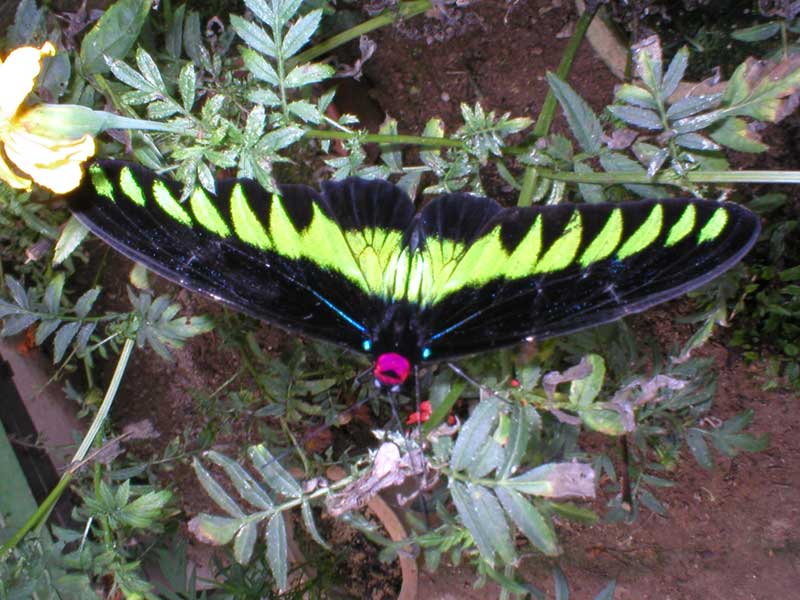
This is a close-up of the main type of butterfly that was at the farm. We also got to see lots of camoflauge insects, like walking sticks and leaf insects. It was a real challenge to pick them out in their habitats--almost like playing a game of "Where's Waldo" in nature. They also had some scorpions that were interesting.
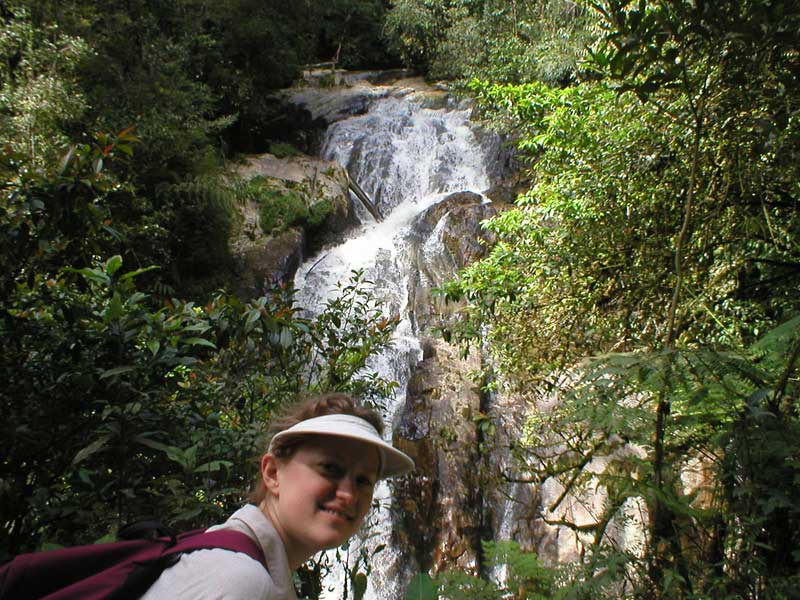
Our final activity in the Highlands was a trek through the jungle. We choose one of the recommended paths from our guidebook, but we got worried after walking for 45 minutes and watching the quality of the path gradually degrade, so we turned around and headed back. Here is Kim overlooking the beautiful Robertson Falls near the beginning of our trail.
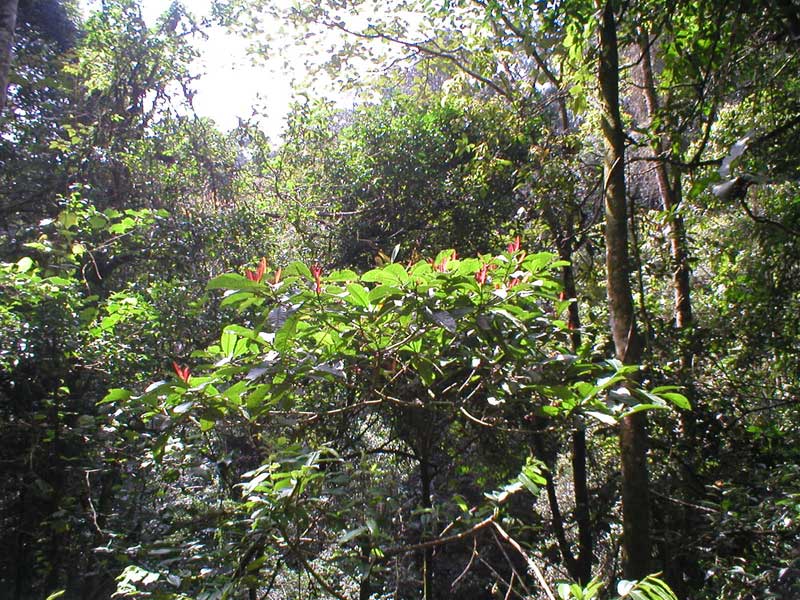
There were lots of interesting trees and colorful plants in the jungle, but surprisingly few insects considering that it was the jungle.
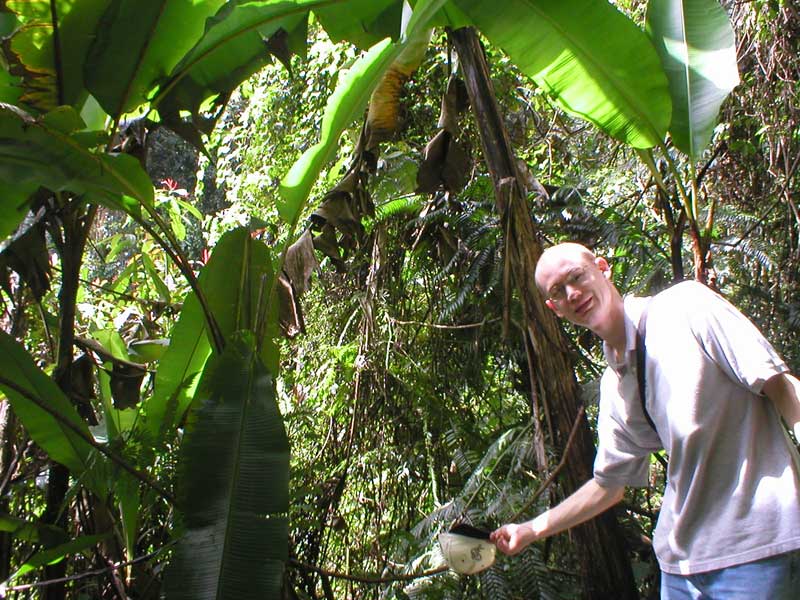
Here is Peter posing with some jungle palms. The jungle was interesting, but we aren't sure we would want to walk through it again.
That was the end of our trip to the Cameroon Highlands. Early the next morning we took a bus down to a nearby town called Tapah. That bus was the worst one we took during our vacation--very crowded and somewhat in somewhat of a state of disrepair, but we made it to Tapah in one piece. At Tapah we caught a bus to Lumut. To catch the bus, we had to go to a dirty Chinese restaurant and talk to a Chinese gentleman there who invited us to sit down and have something to eat while waiting. They also had an awful set of toilets, but we won't go into that.